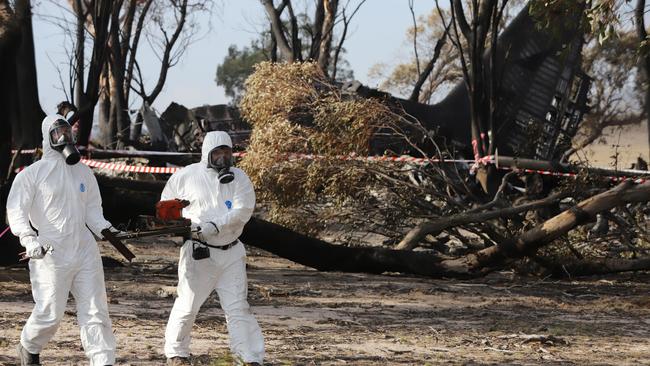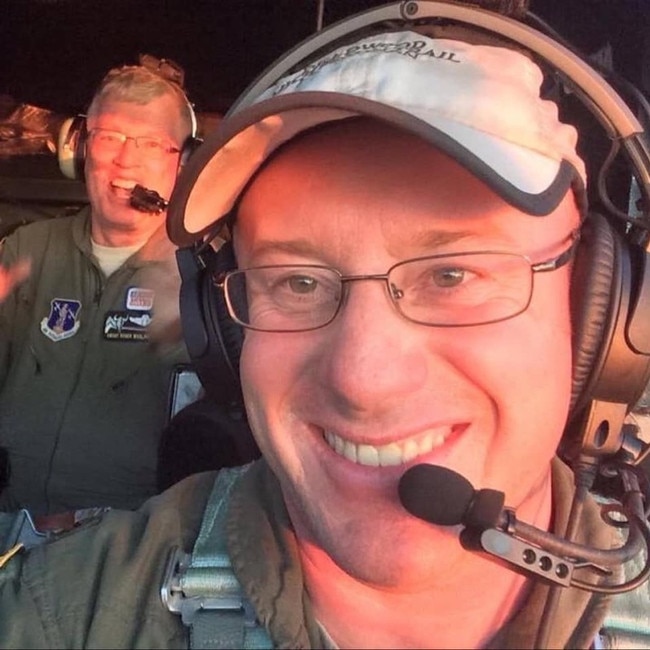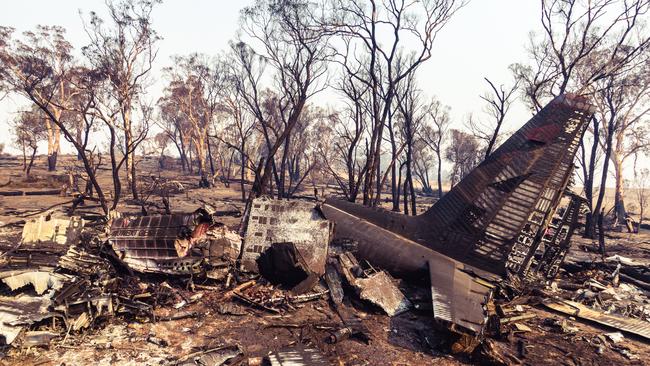NSW bushfires: Cockpit audio reveals no clues to air tanker tragedy
The cockpit voice recorder in the air tanker which crashed killing three US fire fighters last month had not been switched since it left America two months before.
NSW
Don't miss out on the headlines from NSW. Followed categories will be added to My News.
The cockpit voice recorder in the air tanker which crashed killing three US fire fighters last month had not been switched on since it left America two months before.
A preliminary report into the crash said the recorder captured nothing in the cockpit and offered no clues as to what happened to the C-130 water bomber in the moments before it crashed on January 23.
The water bomber was dropping fire retardant on the Good Good fire 50 kms north of the Cooma-Snowy Mountains airport when it crashed. Americans captain Ian McBeth, first officer Paul Hudson and flight engineer Rick DeMorgan Jr all died in the crash.
The preliminary report by The Australian Transport Safety Bureau said there were severe wind gusts in the area when the tanker banked into a cloud of smoke, collided with a tree and burst into flames upon hitting the ground.

ATSB Chief Commissioner Greg Hood said the damaged voice recorder was recovered but offered no clues as to what happened.
“Unfortunately the CVR had not recorded any audio from the accident flight. Instead, all recovered audio was from a previous flight when the aircraft was operating in the United States.”
Why the recorder had not been activated in the North American owned aircraft from the time it arrived and started working in Australia from November 2019 will form part of the ATSB investigation.



Mr Hood said investigators will also include a complete “teardown and inspection of the aircraft’s engines and propellers; review the aircraft’s maintenance history, and performance and handling characteristics; analyse witness reports; and develop a more comprehensive understanding of the accident impact sequence with the use of 3D drone mapping and video analysis of witness videos.”
At the time of the crash the Bureau of Meteorology had warned of severe turbulence below 10,000ft in the area of the crash and wind gusts up to almost 40 knots. Visibility was down to 2000 metres.
Videos taken by witnesses on the ground show the tanker making a number of passes over the fire before releasing 4,500 litres of retardant for two second at just 200ft above the fire.
The plane then banked left into a cloud of smoke and emerged 15 seconds later at a low height.

“The ATSB’s on-site examination of the wreckage, damage to the surrounding vegetation, and ground markings indicated that the aircraft initially impacted a tree in a left wing down attitude, before colliding with the ground,” Mr Hood said.
The fuel tanks on board the aircraft exploded, destroying the plane and killing the crew.
The aircraft was owned by the Coulson Group. Today chief executive Wayne Coulson said the families of the three dead airmen, all former armed forces personnel, had been briefed about the preliminary report.
“We are continuing to work with the ATSB, and we are providing every assistance to them as part of the investigations. It’s important for us, for our team and for the families of those we’ve lost, to understand what happened that day,” he said.
“Australia and Australians are important to our company, and to the crew who operate here. This incident has been devastating to them, but the team members describe the importance of the “mission”, flying to support communities who are grateful and need their expertise in the sky,” he said.
The full report into the crash is expected to take 18 months to complete.
